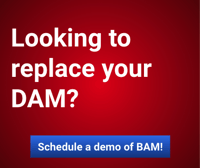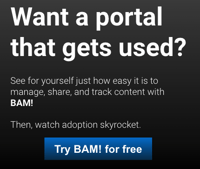Have a plan to stop the “file wars”
Digital Asset Management (DAM) software offers many benefits! The most visible business impact comes when digital assets are efficiently organized, stored, and optimized for secure and easy retrieval. In order to recognize these benefits, it is vital to invest an appropriate amount of time in planning before implementation. The greater the effort to be undertaken, the more time should be spent in planning to ensure a successful outcome in implementation.
One of the earliest important decisions to make is how to organize the file structure of the DAM. This decision will impact both the discoverability (how easy it is to find assets) and the security of content (how easy it is to protect assets from unauthorized access). The folder structure must support the ways your organization can generate and consume assets and other content.
Since every client has different needs and goals for their DAM, there is no one-size-fits-all strategy. However, there are some common patterns to consider.
Strategies for Folder Structure Success
Product-Focused
A product-focused digital asset organization strategy involves creating a folder structure that is defined by product lines and individual products. This strategy offers an easy way for administrators to add and categorize content, and provides a structure that should be familiar to most users.
Product-focused hierarchies are a good choice when most of the DAM content is related to a company’s products and services. An advantage of this strategy is that assets and content are easy to discover for users familiar with the company’s products.

A Product-Centric Hierarchy
Identity-Focused
An identity-focused digital asset strategy organizes content according to who owns or consumes the assets and content you’re sharing. Identities can be considered at both individual and group levels. This strategy is effective for grouping and distributing personalized content, and separating assets and content into specific geographic regions.
An identity-focused strategy may look similar to a company’s org chart. This strategy is a good choice when it’s important to maintain parallel versions of the same content — such as publishing documents in multiple languages, or protecting intellectual property. Each folder can have user or group level permissions to limit access to appropriate users. With this structure it is important to utilize asset metadata, such as tags, to help users easily discover content which may not be obvious based on folder names.

An Identity-Centric Hierarchy
Flexibility
BAM! offers a customizable approach to storage and retrieval which is made possible through a flexible folder-based permission system. In fact, it’s entirely possible to combine both of the strategies described above. In BAM!, assets are initially created in the Library. Your organization may benefit from a product-centric hierarchy that allows administrators to easily organize new content. The Mobile Sales Tool (MST), where content is published for users, can have a separate, identity-based folder structure that simplifies your organization’s process for distributing the right content to the right users, working with different product lines in a variety of geographies.
Conclusion
Every organization has unique challenges to consider when implementing a DAM. The ideas described above illustrate some of the variables to consider before starting, as well as solutions to common scenarios. Most importantly, the utility and success of any DAM depends on choosing the best strategy to integrate with your organization’s workflow, and makes the whole process more efficient. Encouraging and educating users to embrace and utilize the DAM effectively will ultimately lead to a successful implementation.
Additional resources:
- Check out features available in the BAM! sales enablement platform
- Download the OEM Marketing Maximizer
- Book a demo


